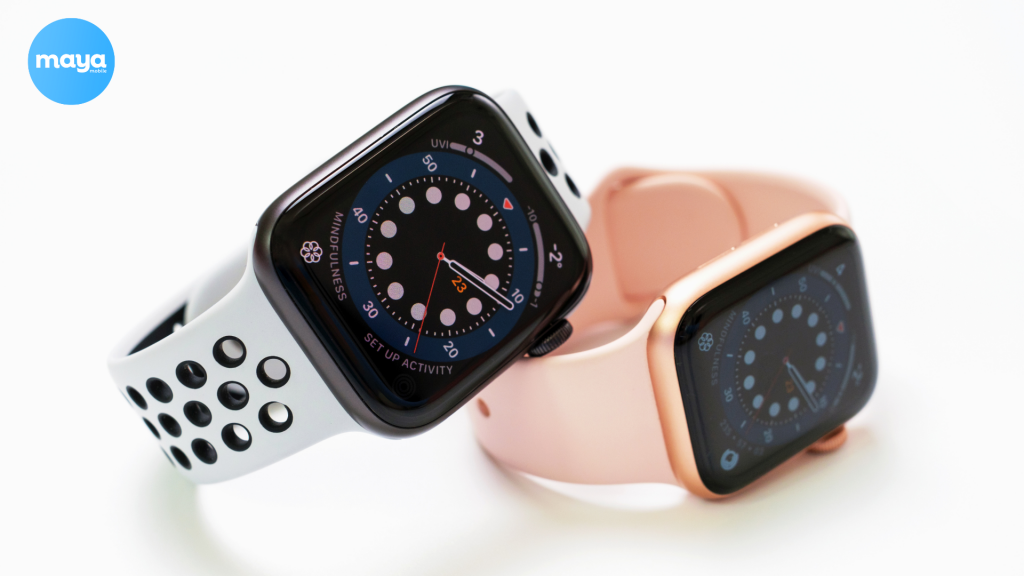Communication has always been about breaking barriers, from the first telegraph to today’s advanced tech. Over time, tools have become faster, smarter, and more convenient.
However, when traveling, many still face issues like costly roaming, finding local SIMs, or staying online. These struggles make what should be easy unnecessarily complicated.
Fortunately, technology like eSIM offers a solution. It gives you the freedom to stay connected without the extra hassles. No matter where you are, digital advancements ensure you’re never out of reach, helping you stay in touch effortlessly.
In this blog, we will explore how communication has evolved over time, from the early days of the telegraph to the advanced eSIM technology we rely on today.
Key Milestones in Digital Communication Evolution
- Telegraph: The First Step in Instant Communication
The telegraph, invented in the 1830s, introduced a way to send messages across long distances quickly. This technology set the stage for modern communication by proving that information could travel faster than people.
- Telephone: Real-Time Conversations Begin
In 1876, the telephone brought a personal touch to communication by allowing people to hear each other’s voices over long distances. This innovation paved the way for the voice calls we rely on today.
- Internet: The Digital Revolution
The internet’s emergence in the 1960s and its widespread adoption by the 1990s changed everything. Email became the first widely used tool, enabling instant global communication. Social media and other platforms later transformed how we connect and share information.
- Mobile Phones: Freedom to Communicate Anywhere
Mobile phones, starting in the 1980s, untethered communication from physical locations. Early phones supported voice calls and text messages, while modern smartphones combine multiple communication tools in one device.
- eSIM: Connectivity Without Borders
eSIM technology, introduced in the 2010s, allows users to switch between mobile networks without needing a physical SIM card. This innovation simplifies connectivity for travelers and supports IoT devices, making it easier to stay connected anywhere.
Also Read: eSIM vs. Physical SIM: Which One is More Convenient for Travel?
- Blockchain in Communication
Blockchain technology has emerged as a game-changer in secure communication systems. It offers decentralized and encrypted platforms, ensuring data integrity and privacy. This technology is particularly valuable for sensitive business communications and personal privacy.
Types of Digital Communications
Text-Based Communication
This type focuses on exchanging written information through digital platforms:
- Emails: A formal and widely used way to share messages, documents, and updates.
- Messaging Apps: Real-time communication tools like WhatsApp and iMessage with features like media sharing.
- SMS (Short Message Service): A basic method for sending text messages available on all mobile phones.
Voice Communication
This involves transmitting sound over digital systems:
- VoIP (Voice over Internet Protocol): Services like Skype and Zoom enable voice calls over the internet.
- Mobile Calls: Cellular networks like 4G and 5G ensure reliable global voice communication.
Video Communication
This combines visual and audio elements for face-to-face interaction:
- Video Conferencing: Tools like Zoom and Microsoft Teams support remote meetings and online classes.
- Live Streaming: Platforms like YouTube and Instagram Live allow real-time broadcasts.
Social Media Communication
Social platforms are key for sharing and interacting:
- Public Posts: Updates, news, or thoughts shared on Facebook, Twitter, and LinkedIn.
- Private Messaging: Social platforms like Instagram and Facebook Messenger offer direct chat features.
Multimedia Messaging
This enables the sharing of various media files:
- MMS (Multimedia Messaging Service): Allows the exchange of images, audio, and video over mobile networks.
- Media Sharing Apps: Platforms like TikTok and Instagram specialize in multimedia content sharing.
Cloud-Based Collaboration Tools
These tools streamline teamwork and communication:
- Document Sharing: Google Drive and Dropbox facilitate collaborative file management.
- Project Management Tools: Asana and Trello enhance task organization and team updates.
IoT (Internet of Things) Communication
IoT connects devices for automation and data sharing:
- Smart Home Devices: Gadgets like smart speakers and thermostats communicate via apps.
- Wearable Tech: Smartwatches and fitness trackers send real-time data to smartphones.
Embedded Communication (eSIM Technology)
eSIM technology eliminates physical SIM cards by embedding them into devices, making network connectivity more seamless and efficient for smartphones, tablets, and IoT gadgets.
Understanding these types of digital communication helps individuals and businesses choose the best tools for their needs, enhancing connectivity, convenience, and collaboration.
Asynchronous Communication
This growing category involves non-real-time communication like recorded video messages, email updates, or collaborative project boards (e.g., Slack or Trello). It reduces the need for immediate responses, enhancing productivity in global teams.
10+ Benefits of Digital Communications
Enhanced Accessibility
Digital communication has made the world smaller and more connected. Whether you’re video-calling a friend halfway across the globe or sending a quick text to a colleague, accessibility is no longer a barrier.
Tools like real-time translation and text-to-speech mean language or physical disabilities don’t get in the way of communication.
Cost Efficiency
Gone are the days of expensive international calls and hefty travel budgets. Digital communication platforms let you connect with anyone, anywhere, at a fraction of the cost.
Businesses save big on travel and logistics with tools like video conferencing, and individuals can make free or low-cost calls through apps like Zoom or WhatsApp.
Increased Productivity
Getting things done has never been easier. Platforms like Microsoft Teams or Slack let you chat, share files, and work on documents all in one place. Plus, automated reminders and scheduling tools mean you can focus on what matters instead of managing small tasks. It’s all about working smarter, not harder.
Improved Customer Experience
Customers expect quick, personalized responses, and digital communication delivers. AI chatbots can handle queries instantly, while personalized emails and updates make people feel valued. When businesses can respond quickly and accurately, customers are happier—and happy customers stick around.
Scalability for Businesses
Whether you’re a small startup or a large corporation, digital tools help you grow without breaking the bank. Remote work platforms let you hire talent from anywhere, while digital ads and email marketing reach millions of potential customers without much effort. Scaling up has never been this simple.
Environmental Sustainability
Digital communication is a win for the planet, too. Think about all the paper saved with emails instead of letters or how fewer flights for meetings mean less carbon emissions. It’s not just efficient—it’s also eco-friendly.
Flexibility and Convenience
With digital communication, you’re never tied to one place. Work from home, send a quick message while commuting, or catch up on a recorded meeting when it suits you. It’s all about flexibility, making it easier to fit communication into your busy life.
Real-Time Feedback and Insights
Want to know how your social media post is doing or what customers think of your service? Digital tools give you instant feedback. Platforms like Instagram or Mailchimp show detailed analytics, while surveys and polls let you gather opinions fast and adapt as needed.
Supports Innovation
Digital communication is a launchpad for cool new technologies. Think of IoT devices that connect your smart home or augmented reality tools that make virtual meetings feel almost real. It’s a space where innovation thrives, giving us better tools every day.
Resilience in Crisis Situations
When life throws curveballs, digital communication keeps things running. Businesses and schools stayed connected during the pandemic, and governments used digital channels to share crucial updates. Whether it’s a crisis or just a tough day, these tools are there to help.
Digital communication doesn’t just keep us connected—it makes life easier, faster, and smarter. Whether you’re running a business, staying in touch with loved ones, or learning new things, the benefits are everywhere.
Bridging the Digital Divide
Despite advances, not everyone has access to the infrastructure necessary for digital communication. Efforts like satellite internet (e.g., Starlink) and government initiatives aim to ensure global connectivity, especially in underserved regions.
Hybrid Work and Collaboration
The rise of hybrid work has redefined how teams communicate. Platforms like Microsoft Teams and Zoom have become indispensable, but challenges like “Zoom fatigue” require solutions to balance efficiency and well-being.
Gamification
Gamification is increasingly integrated into communication tools to boost user engagement. For example, platforms like Slack use rewards or badges to encourage participation and productivity.
The Role of Personalization in Digital Communication
Personalization is a key driver of effective digital communication, making interactions more relevant and meaningful. Whether it’s a tailored email, product recommendations, or curated social media feeds, personalization enhances user satisfaction and engagement.
Why It Matters
Consumers increasingly expect personalized experiences, with studies showing 80% are more likely to engage with brands that provide them. Personalized messages, ads, and offers often achieve higher response rates, driving loyalty and conversions.
Applications
- Marketing: Platforms like Google Ads and Facebook use data to target users with relevant offers.
- Customer Support: AI chatbots tailor responses using customer history for faster, more effective service.
- Content Curation: Netflix and Spotify use algorithms to deliver personalized recommendations.
Balancing Benefits and Privacy
While personalization is impactful, it raises privacy concerns. Businesses must use customer data ethically, ensuring transparency and consent to maintain trust.
Incorporating personalization into digital communication creates more engaging, impactful experiences for users, building stronger connections and long-term loyalty.
Future of Digital Communications
The future of digital communication will reshape how people connect, collaborate, and innovate. Advancements in technology will enhance global reach, efficiency, and security, offering direct benefits to individuals and businesses.
Global Connectivity Without Borders
eSIM technology and satellite internet are breaking down geographical barriers. Travelers can instantly switch between networks without physical SIM cards, while satellite internet brings reliable access to underserved areas.
Devices equipped with eSIM support are ideal for seamless connectivity during international travel or for remote work in areas with limited coverage.
AI-Driven Communication
Artificial Intelligence is automating and improving communication processes. AI tools will provide real-time translations, personalized recommendations, and smarter customer service interactions.
Businesses can integrate AI-powered chatbots to manage queries instantly or analyze communication data to enhance customer experiences.
Immersive Technologies with VR and AR
Virtual reality and augmented reality are set to transform digital communication. Virtual meetings will simulate face-to-face interactions, while AR will provide interactive experiences for training and customer engagement. Professionals and educators can start using VR platforms or AR applications to offer dynamic and engaging experiences.
Advancements in Speed and Reliability
5G and upcoming technologies will make communication faster and more stable. This means seamless video calls, real-time collaborations, and smoother streaming experiences. Upgrading to 5G-enabled devices will help users experience the best connectivity for both personal and professional use.
Enhanced Security and Privacy
With more data being shared online, communication tools will integrate stronger encryption and authentication technologies. Using encrypted platforms and implementing security measures like multi-factor authentication will protect sensitive information.
IoT and Connected Devices
The Internet of Things is expanding rapidly, connecting devices like smartwatches, home appliances, and vehicles. eSIM-enabled IoT devices ensure uninterrupted communication without the need for physical SIM cards, creating smarter, more automated systems.
Consumers and businesses can adopt IoT solutions to simplify everyday tasks and improve operational efficiency.
Sustainability in Communication
Future technologies aim to reduce the environmental footprint of communication. eSIMs eliminate the need for physical cards, reducing e-waste, while energy-efficient networks minimize resource consumption. Opting for devices and services designed with sustainability in mind supports these initiatives.
Digital communication is evolving to be faster, smarter, and more inclusive. These developments will enhance convenience and connectivity, empowering users to embrace a world where communication is effortless and effective.
Stay Connected Effortlessly Anywhere with Maya Mobile
Traveling without a reliable connection can be difficult—switching SIM cards, finding local network providers, or dealing with high roaming charges can take up time and add frustration. Staying connected while exploring new places becomes a real challenge.
This can easily be solved with Maya Mobile eSIM. It lets you activate and manage your mobile plan digitally, so you don’t need a physical SIM card. Whether you’re navigating in a new country or keeping in touch with family, Maya Mobile makes it simple to stay connected.
With a quick setup and no extra equipment, you can enjoy seamless connectivity anywhere in the world. Forget the worry of network issues or extra charges, and focus on your journey. Maya Mobile ensures you stay online with ease, wherever you go.
Related Reads
FAQs on Digital Communications
What are the 5 pillars of digital transformation?
- Customer Experience: Enhancing user interactions and engagement across digital platforms.
- Operational Agility: Streamlining processes for flexibility and responsiveness.
- Culture and Leadership: Fostering a culture of innovation and adaptability within the organization.
- Workforce Enablement: Equipping employees with the tools and skills to thrive in a digital environment.
- Integration of Technology: Utilizing advanced technologies to drive growth and efficiency.
What are the six stages of digital transformation?
- Business as Usual: Relying on traditional processes and tools.
- Present and Active: Isolated efforts to integrate digital tools and technologies.
- Formalized: Establishing a clear digital strategy with leadership support.
- Strategic: Scaling digital initiatives with cohesive efforts across the organization.
- Converged: Fully integrated digital systems and processes driving business operations.
- Innovative and Adaptive: Continual evolution to remain ahead of technological trends and market needs.
What are the three main components of digital transformation?
- Technology: Implementing advanced systems like cloud computing, AI, and IoT.
- Process: Redesigning workflows to improve efficiency and agility.
- People: Building a digitally skilled workforce and fostering leadership to support transformation.
What is the backbone of digital communication?
The internet is the backbone of digital communication. It provides the infrastructure that enables real-time messaging, video conferencing, VoIP, email, and social media interactions. Technologies like 5G, cloud computing, and fiber-optic networks further enhance this backbone by improving speed and reliability.
What are the 4 main areas of digital transformation?
- Process Transformation: Reengineering processes to enhance productivity and efficiency.
- Business Model Transformation: Innovating revenue streams and customer engagement through digital tools.
- Domain Transformation: Leveraging technology to enter new markets or industries.
- Cultural Transformation: Encouraging innovation, collaboration, and a forward-thinking mindset across teams.
What is digitalization in communication?
Digitalization in communication refers to the process of converting traditional communication methods into digital formats. Examples include transitioning from physical letters to emails, using instant messaging instead of phone calls, or implementing VoIP and video conferencing solutions for business communication.
Is AI part of digital transformation?
Yes, Artificial Intelligence (AI) is a crucial component of digital transformation. It enables automation, streamlining repetitive tasks for greater efficiency. It provides data analytics to extract insights from vast datasets to inform decision-making.
It enhances customer interaction through AI-powered chatbots and personalization. It supports predictive modeling to anticipate trends and customer behaviors to stay ahead of market demands.




